Family Engagement White Papers & Case Studies
A collection of stories and research for STEM field leaders, practitioners, funders and more to empower families.
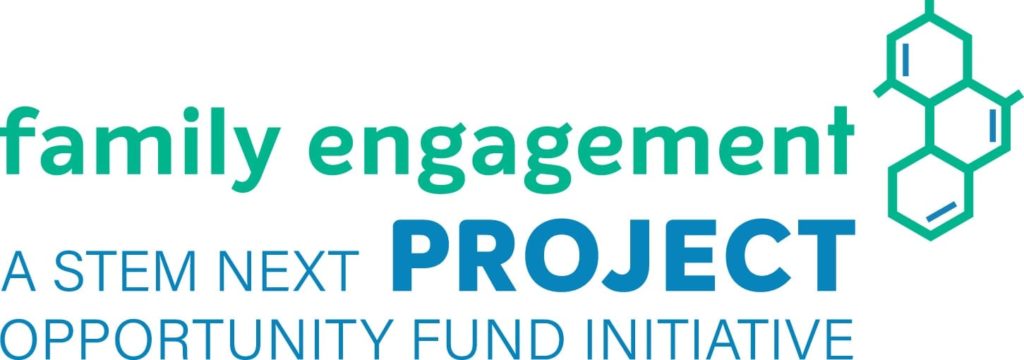
Changing the Game in STEM with Family Engagement
Parents are vital players in raising youth’s awareness of the value of STEM and in brokering their participation in activities that build STEM competencies.
STEM Next Opportunity Fund is committed to ensuring that every child – especially girls, youth of color, kids in low-income communities, and youth with disabilities – has access to STEM experiences and the social capital that lead to greater opportunities in academics and careers.
We believe family engagement is a game changer and offer this white paper to raise awareness of its importance and amplify promising practices.
The Essential Funders’ Guide to STEM-Focused Family Engagement
Young people – particularly girls and young people from underrepresented communities – benefit when families encourage them to pursue STEM. Yet families are often unsure about what they should do, and many STEM-focused organizations do not have the resources or know-how to engage them effectively.
This guide is intended to raise awareness and build knowledge to increase grantmaker support for practice, research, and policy solutions to better support families and address the race, gender and income gaps in STEM.
Reimagining Family Engagement: How Out-of-School Time STEM Programs "CARE"
The Institute for the Study of Resilience in Youth (ISRY) at McLean Hospital and Harvard Medical School, in partnership with the STEM Next Opportunity Fund, created and studied a virtual national learning community to understand how out-of-school time (OST) programs in the U.S. are choosing, adapting, and applying strategies from the STEM Family Engagement Planning Tool.
This report describes the rationale, methodology, and findings of CARE (Connect-Act-Reflect-Empower) strategies to increase family engagement.
Reimagining Family Engagement Spotlights
Explore our growing series of case studies highlighting the essential role family engagement plays in successful STEM programming.

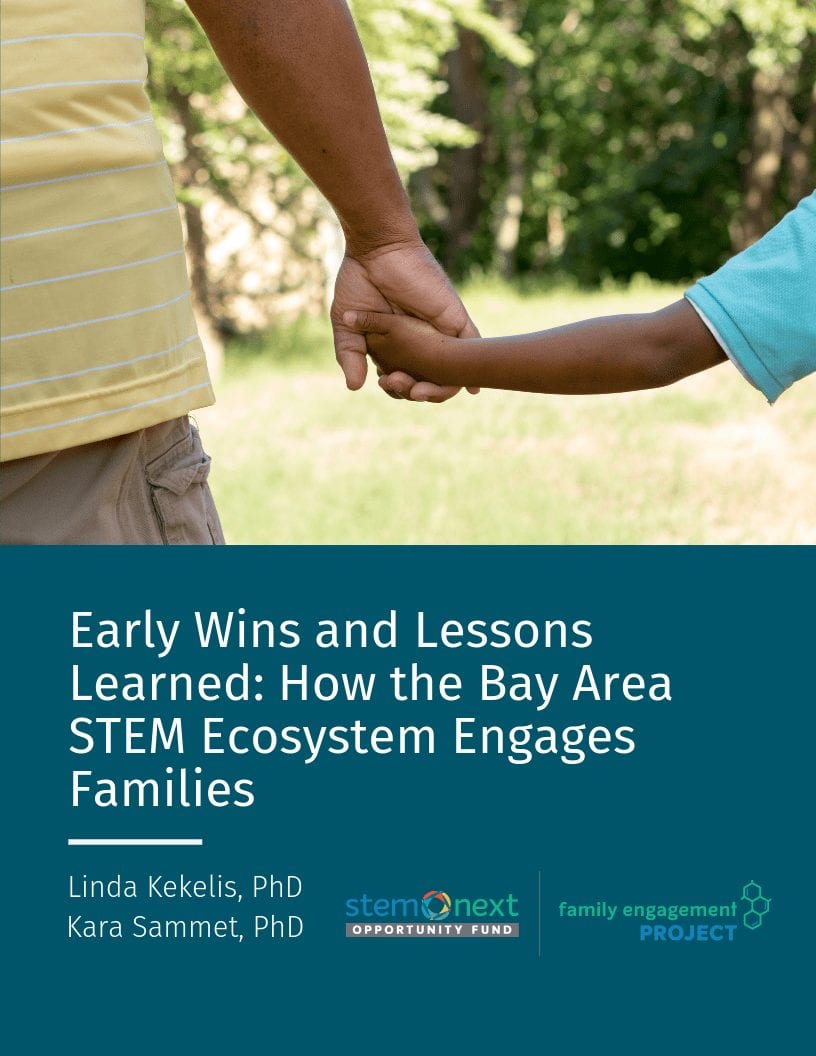
Early Wins and Lessons Learned: How the Bay Area STEM Ecosystem Engages Families
In this case study, Drs. Kekelis and Sammet highlight the work of the Bay Area STEM Ecosystem, which aims to increase equity and access to STEM learning opportunities in underserved communities. First, Kekelis and Sammet lay out the problems the Ecosystem is trying to solve and give a high level overview of the Bay Area STEM Ecosystem’s approach to addressing them. Then, based on field observations and interviews, Kekelis and Sammet highlight both the successes and some missed opportunities from the first collaborative program of this Ecosystem. Both the successes of The Bay Area STEM Ecosystem–as well as the partners’ willingness to share and examine where they have room for refinements –illustrate the exemplary practice, leadership, and growth mindset of this group.
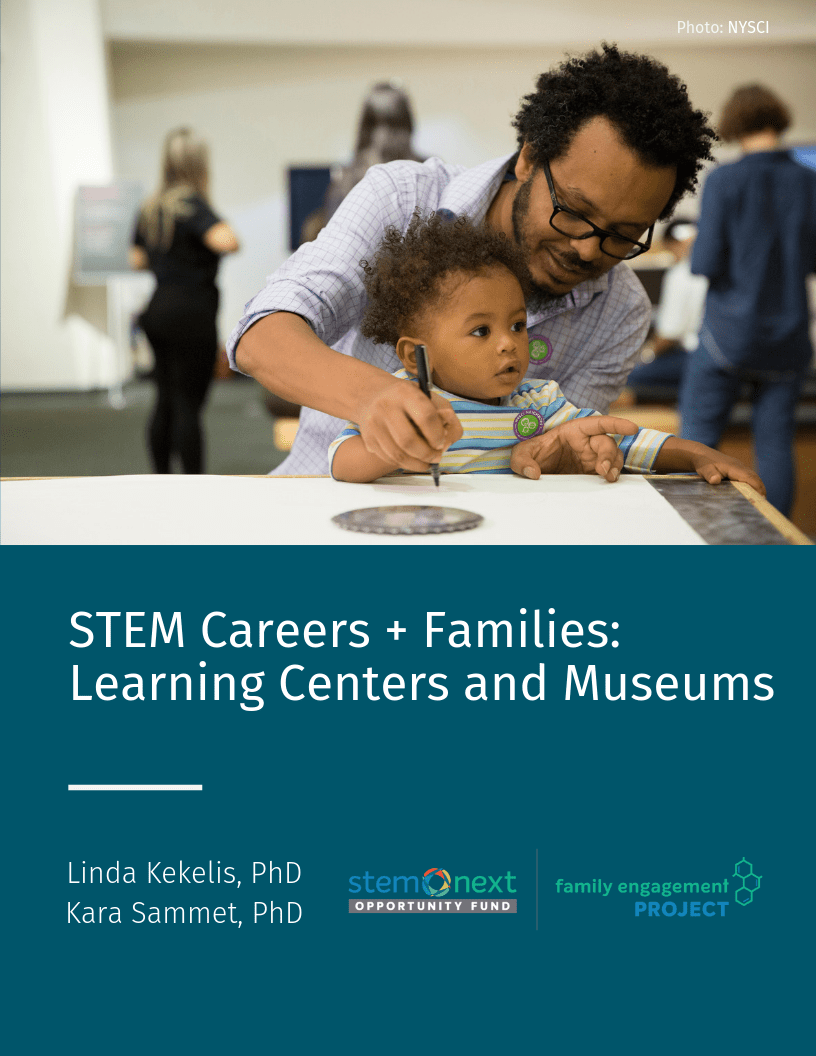
STEM Careers + Families: Learning Centers and Museums
In today’s fast-paced, entertainment-focused world, the very best museums do so much more than provide rainy day activities that engage in the moment but lead nowhere.These institutions lay the groundwork for long-term interest and persistence in STEM. In this case study, Drs. Kekelis and Sammet showcase the work of the New York Hall of Science (NYSCI) and the Oregon Museum of Science and Industry (OMSI). These museums are engaging families in innovative ways and making career exploration an important piece of their mission. Drs. Kekelis and Sammet interviewed leadership from NYSCI and OMSI to learn about their efforts and lessons learned in promoting career exploration with families.
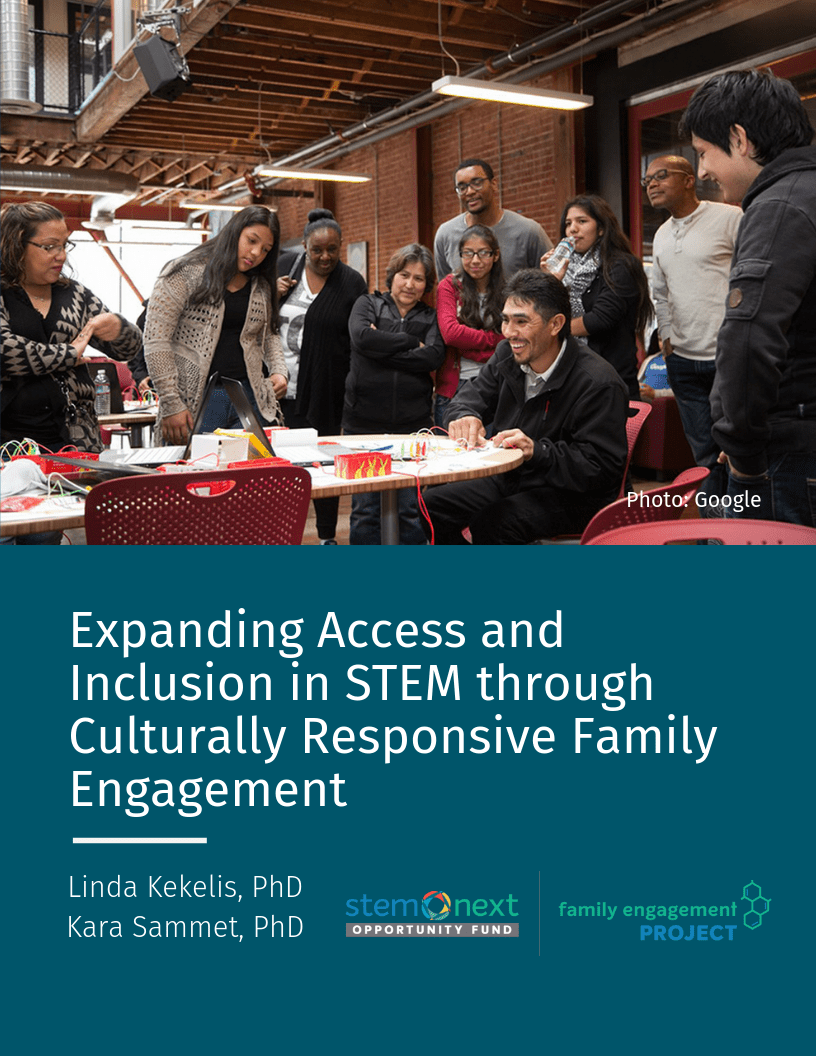
Expanding Access and Inclusion in STEM through Culturally Responsive Family Engagement
What can we do differently to improve access to and inclusion in STEM? Include families! Culturally responsive family engagement is both a strategy and a process that maximizes the unique strengths, interests, needs, and complexities of communities who are underrepresented in STEM. Why is it important? Culturally responsive family engagement intentionally taps into family culture and history to develop curriculum that is engaging and meaningful. In this case study, Drs. Sammet and Kekelis highlight best practices and lessons learned from two programs – Techbridge Girls and Code Next – that serve communities with important cultural differences. This case study offers insights for both practitioners and funders of STEM programs.
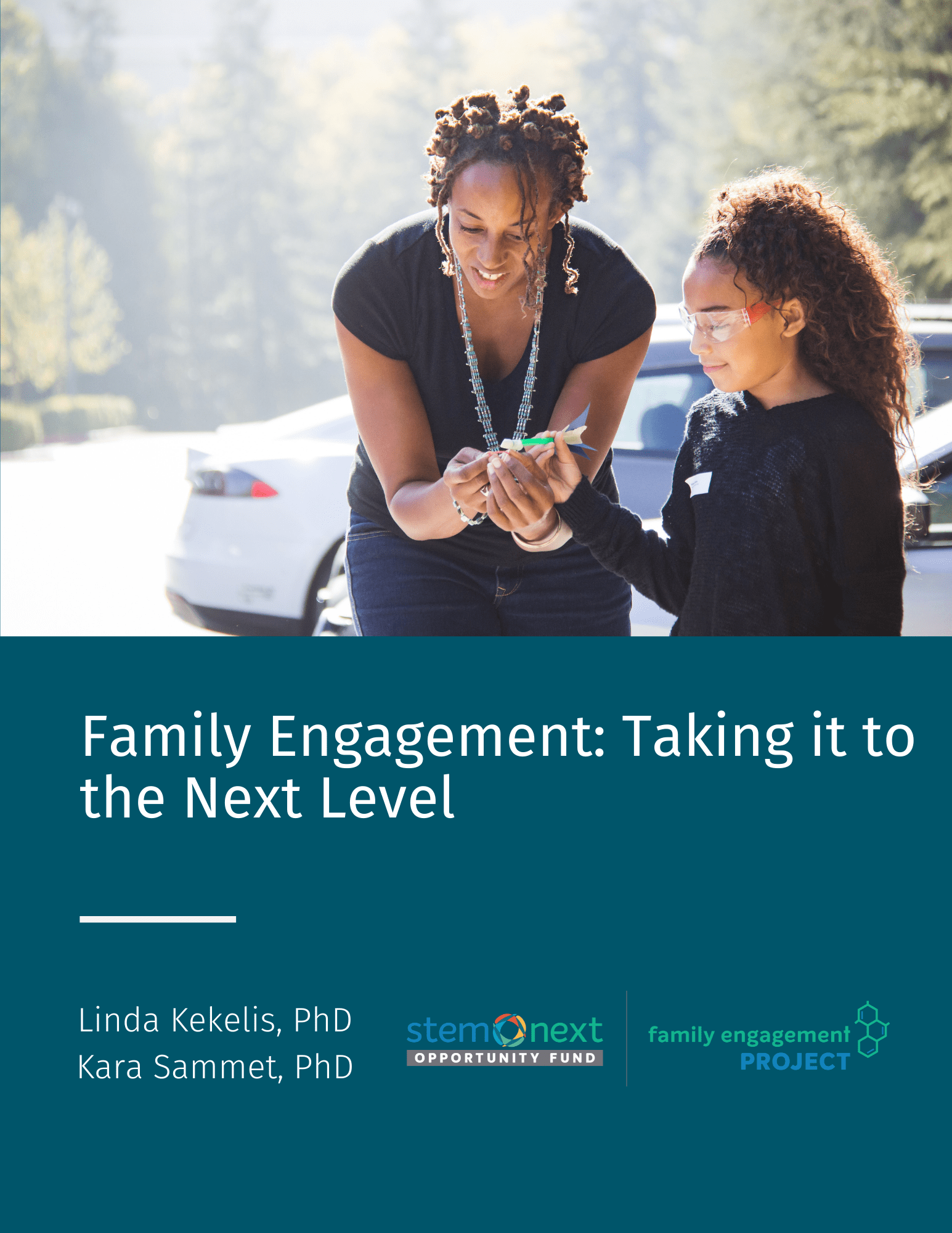
Family Engagement: Taking it to the Next Level
How can organizations integrate parent education into their STEM programs? With support, parents can learn to engage in positive interactions that spark and maintain their child’s interest in STEM. In this case study, Drs. Kekelis and Sammet highlight the Greene Scholars Program and Digital Youth Divas—two programs that are exemplary in their approach to empowering parents with research, education, and resources. While their program models, participants, and STEM-focus are quite different, these organizations offer promising practices that can benefit all communities.
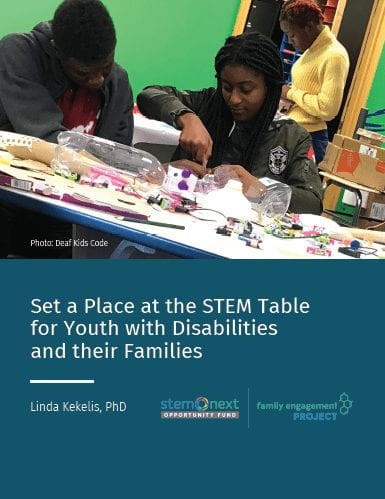
Set a Place at the STEM Table for Youth with Disabilities and their Families
How can we make sure that kids who are deaf, visually impaired, or physically disabled have the chance to imagine and create a bright future with science, technology, engineering, and mathematics (STEM)? Youth with disabilities hold potential to be productive and creative adults, and yet they are less likely to go to college and less likely to live independently than their peers without disabilities. It’s not because of their disability, but often because of the expectations and opportunities afforded to them. STEM can provide the means to master skills and develop confidence and perseverance that make possible a fulfilling life. In this case study Dr. Linda Kekelis shares how STEM can empower and the programs, such as Deaf Kids Code, that are engaging youth and their families to make STEM learning opportunities accessible and successful.

